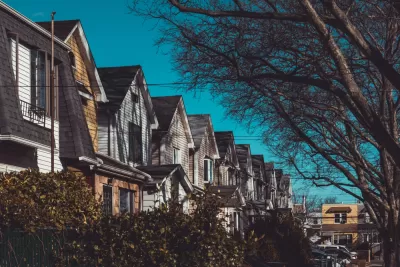As non-owner-occupied homes increase in number in Queens neighborhoods, it's becoming harder for immigrants to afford a first home.

Oscar Perry Abello writes about growing concerns that Queens is losing its identity as a place for immigrants to come to the country and establish a life—the death of the starter home is how the headline describes the stakes.
According to Abello, "community advocates are sounding the alarm that investor dollars are setting off market speculation that threaten to price out the first-time homebuyers, many of them immigrants, that made those neighborhoods such reliable places to sprout roots."
Abello, who has a family history of arriving in Queens to establish a life in the United States, shares news of a report published earlier this year by the Chhaya Community Development Corporation, which "found that mortgages for non-owner-occupied homes in Queens is now roughly triple what it was before the housing market crash of 2008."
"In three key neighborhoods that Chhaya has long considered a safe bet for first-time immigrant homebuyers, non-owner-occupied home mortgages accounted for 20-30 percent of home purchases in 2017," according to Abello. Local advocates are stepping up messaging, as explained in the article, that connects those non-owner-occupied home mortgages to large-scale investors.
Abello also calls attention to the role of the Federal Housing Administration's Distressed Asset Stabilization Program in shifting ownership of much of the borough's housing stock to large investors in the wake of the foreclosure crisis of the Great Recession.
FULL STORY: Is the Starter Home Dead in Queens? Time Is Running Out

Study: Maui’s Plan to Convert Vacation Rentals to Long-Term Housing Could Cause Nearly $1 Billion Economic Loss
The plan would reduce visitor accommodation by 25,% resulting in 1,900 jobs lost.

North Texas Transit Leaders Tout Benefits of TOD for Growing Region
At a summit focused on transit-oriented development, policymakers discussed how North Texas’ expanded light rail system can serve as a tool for economic growth.

Why Should We Subsidize Public Transportation?
Many public transit agencies face financial stress due to rising costs, declining fare revenue, and declining subsidies. Transit advocates must provide a strong business case for increasing public transit funding.

A Visual Celebration of Manhattan’s Chinatown Elder Community, Through Food
Lanterns, cafeteria trays, and community connection take center stage in this stunning photo essay.

How to Make US Trains Faster
Changes to boarding platforms and a switch to electric trains could improve U.S. passenger rail service without the added cost of high-speed rail.

Columbia’s Revitalized ‘Loop’ Is a Hub for Local Entrepreneurs
A focus on small businesses is helping a commercial corridor in Columbia, Missouri thrive.
Urban Design for Planners 1: Software Tools
This six-course series explores essential urban design concepts using open source software and equips planners with the tools they need to participate fully in the urban design process.
Planning for Universal Design
Learn the tools for implementing Universal Design in planning regulations.
City of Santa Clarita
Ascent Environmental
Institute for Housing and Urban Development Studies (IHS)
City of Grandview
Harvard GSD Executive Education
Toledo-Lucas County Plan Commissions
Salt Lake City
NYU Wagner Graduate School of Public Service





























